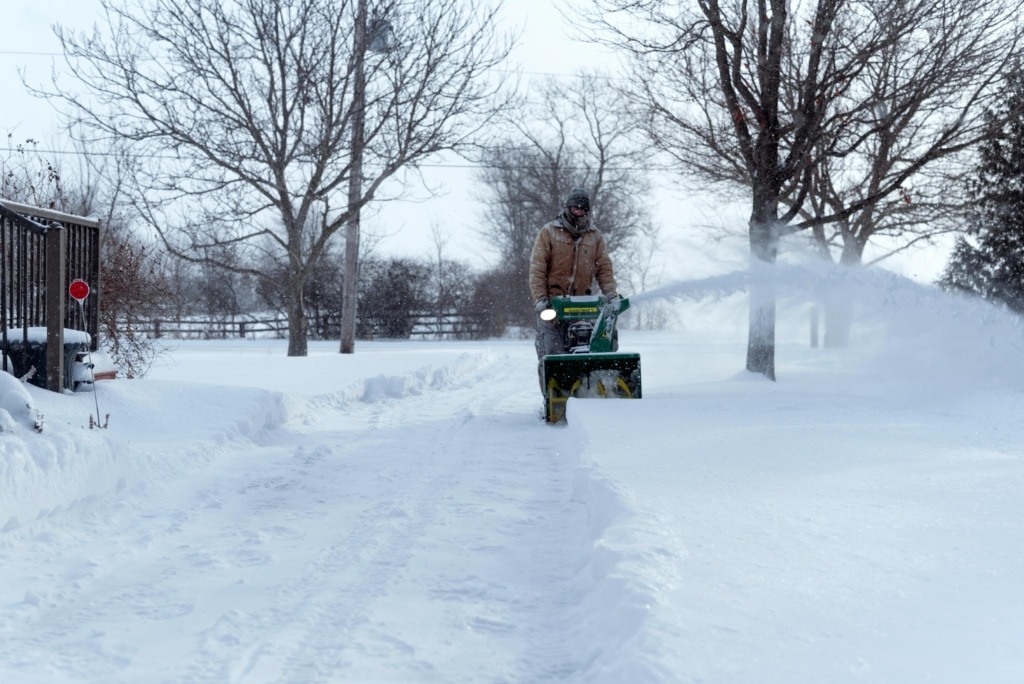As winter approaches in the Northwest, especially here in the Boise and Treasure Valley areas, it’s essential for homeowners to get their properties ready for the colder months. Preparing your home for winter not only helps protect your investment but also ensures comfort and safety during the chilly season. Here at Cooper Ridge Real Estate, we care about keeping your home in top shape year-round. Here’s a checklist to guide you through essential winter preparation tasks for homeowners in our region.
Winter in Treasure Valley can bring freezing temperatures, so a reliable heating system is a must. Consider these steps:

1. Inspect and Maintain Your Heating System
- Schedule a Professional Inspection: Have an HVAC professional inspect your furnace, heat pump, or boiler to ensure it’s running efficiently.
- Replace Filters: Clean or replace air filters in your heating system. A dirty filter can reduce efficiency and increase heating costs.
- Check Thermostat Settings: Make sure your thermostat is set to a comfortable temperature, and consider upgrading to a programmable thermostat to help save on energy bills.

2. Protect Pipes from Freezing
Freezing pipes are a common winter issue in the Northwest. Prevent costly repairs by taking the following precautions:
- Insulate Exposed Pipes: Wrap insulation around exposed pipes, particularly those in unheated areas like basements, garages, or crawl spaces.
- Drain Exterior Faucets: Disconnect and store hoses, and turn off and drain exterior faucets to prevent freezing and bursting.
- Let Faucets Drip: On extremely cold nights, let indoor faucets drip to keep water moving and reduce the chance of freezing.

3. Seal Windows and Doors
Cold air drafts can make your home uncomfortable and drive up heating costs. Here’s how to keep the warmth in:
- Apply Weather Stripping: Add or replace weather stripping around doors and windows to block out drafts.
- Use Window Insulation Kits: Install window insulation kits on older or single-pane windows to improve efficiency.
- Check for Air Leaks: Walk around your home and feel for drafts around windows, doors, and even electrical outlets. Seal any gaps with caulk or expanding foam.

4. Clean Gutters and Downspouts
When winter storms hit, a clogged gutter can lead to water damage, ice dams, and even roof damage. Take the following steps:
- Remove Debris: Clear out leaves, twigs, and other debris from gutters and downspouts.
- Ensure Proper Drainage: Make sure downspouts are directing water away from the foundation of your home. Use extensions if necessary to keep water at least five feet from your home.
- Check for Sagging Gutters: Tighten any loose brackets to ensure your gutters can handle the weight of snow and ice.

5. Inspect the Roof and Chimney
Heavy snowfall is a possibility, so it’s important to make sure your roof and chimney are in good condition.
- Check for Missing Shingles: Look for any signs of wear, missing shingles, or damage that could lead to leaks.
- Inspect Flashing: Ensure that the flashing around vents, skylights, and chimneys is secure and free of gaps.
- Clean and Check Chimneys: If you have a wood-burning fireplace, have your chimney professionally cleaned and inspected to prevent chimney fires.

6. Test Smoke and Carbon Monoxide Detectors
As windows and doors are kept closed to keep out the cold, the risk of carbon monoxide buildup increases.
- Replace Batteries: Change the batteries in smoke and carbon monoxide detectors.
- Test Alarms: Test each alarm to make sure it’s working properly. Replace any units that are more than 10 years old.
- Place Detectors Strategically: Make sure you have detectors in key areas, especially near sleeping areas and in rooms with gas appliances.

7. Prepare an Emergency Kit
Winter weather can be unpredictable, so be prepared for any unexpected situation with a well-stocked emergency kit.
- Stock Up on Essentials: Include items like bottled water, non-perishable food, a flashlight, blankets, and a battery-powered radio.
- Prepare for Power Outages: Keep extra blankets, warm clothing, and batteries on hand. Consider investing in a portable generator if your home is in an area prone to power outages.
- First Aid Supplies: Make sure you have a well-stocked first-aid kit, and include medications that may be necessary for you or your family members.

8. Take Care of Outdoor Spaces
Winterizing your outdoor areas can help protect your landscaping and hardscaping features.
- Winterize Sprinklers: Drain your irrigation system to prevent damage from frozen pipes.
- Store Outdoor Furniture: Bring outdoor furniture, grills, and other items inside or cover them to protect them from the elements.
- Trim Trees and Bushes: Trim any branches that hang near your home or driveway to avoid damage from falling branches during heavy snowfall.

9. Service Snow Removal Equipment
Being prepared for snowfall can make your winter experience smoother and less stressful.
- Check Snow Shovels and Salt: Make sure you have snow shovels, ice melt, or sand ready for icy walkways and driveways.
- Test Snow Blowers: If you have a snow blower, test it before the first snowfall to make sure it’s in working order.
- Clear Paths Early: As snow accumulates, clear paths, driveways, and sidewalks as soon as possible to prevent ice buildup.
At Cooper Ridge Real Estate, we’re here to support our Treasure Valley community through every season. By taking these proactive steps, you can enjoy a comfortable, safe winter while protecting the value of your home. For more tips or if you’re considering making a move before the winter weather hits, reach out to us. Our team is ready to assist you with any real estate needs this season and beyond!

